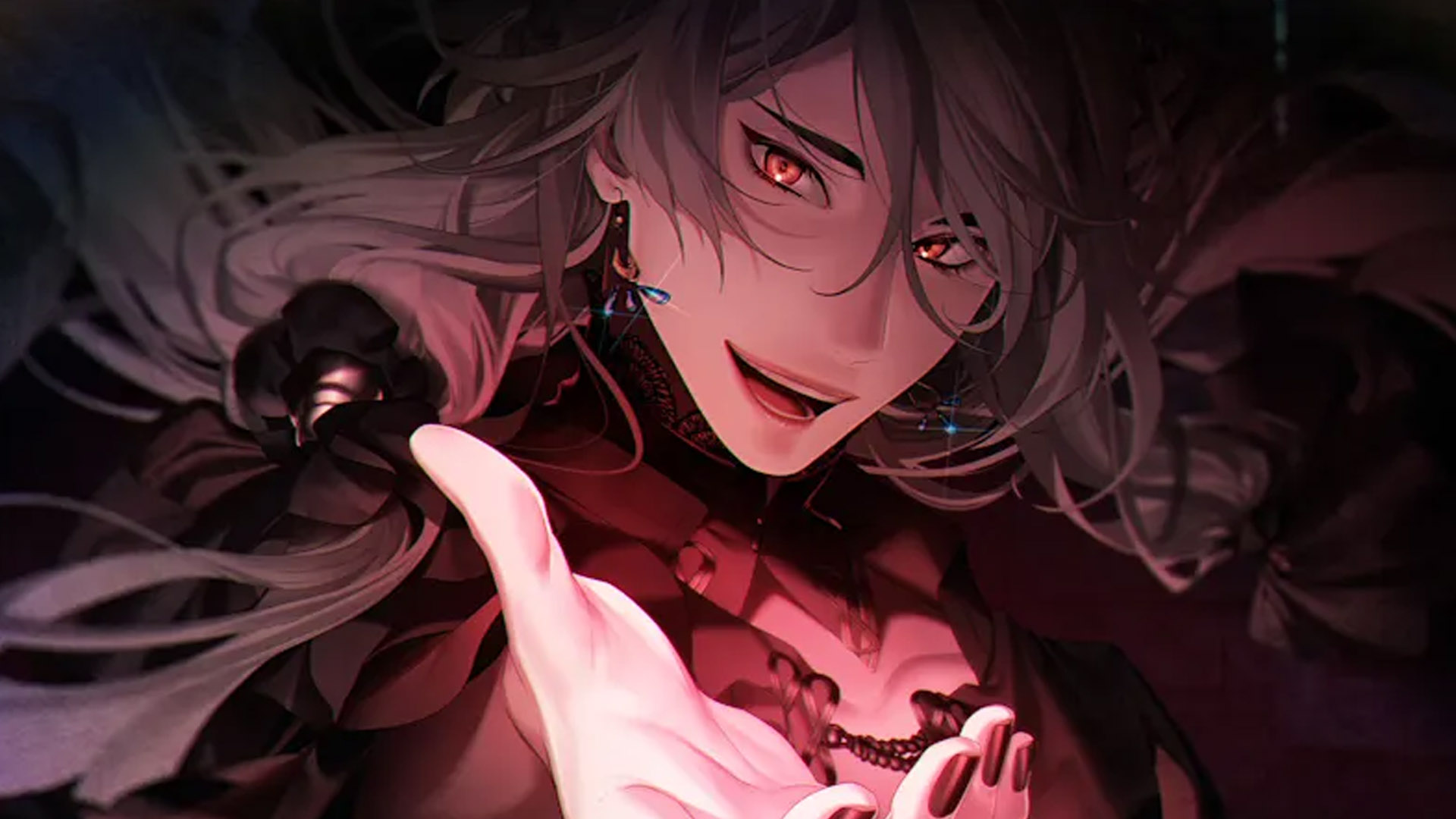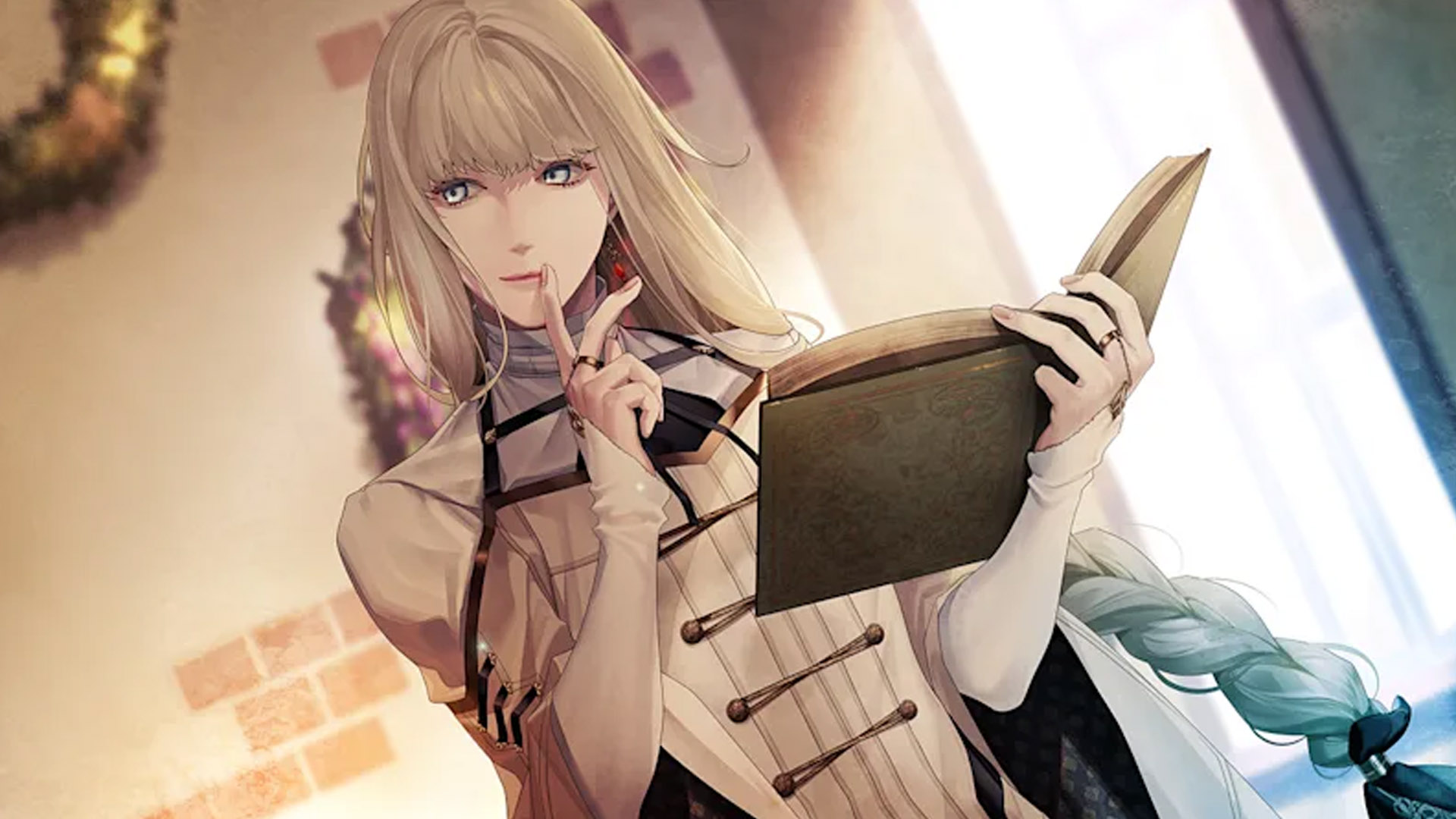Life always builds up to death. In the same way, stories build up to their finale, and while the finale is certainly important, it’s the moments and details along the way that give the entire package its meaning. Virche Evermore -ErroR: Salvation- is, at its core, a game about death. Just as death calls attention to the life that existed beforehand, Virche Evermore is masterful in the art of buildup and payoff, with a story and progression system reflective of the despair and the beauty of the impending.
Virche Evermore’s protagonist, default name Ceres, is the unwilling embodiment of Death. The game starts off swinging by recounting the unlucky many who died without warning merely because they were close to Ceres. It feels as though such an extreme start to the story can’t be topped, but it does indeed get worse: the game’s setting, the island of Arpéchéle, is enveloped in a curse that prevents people from living past the age of 23. And if that wasn’t bad enough, a serial killer named Bourreau has been terrorizing the population with his inhuman strength and gruesome mass killings. These three increasingly intense plot points intertwine when Ceres is approached by a man calling himself the Watchman of Death. He claims that if she can discover the truth about the killings across Arpéchéle, she can be reborn as a “normal girl” and not as Death incarnate. All this occurs as part of the game’s “common route,” a bulky prologue and five chapters of story in which Ceres and the game’s love interests seek to put an end to Bourreau’s devastation.
Virche Evermore’s common route stands on its own as an engaging narrative, but it truly serves as a precursor to each love interest’s storyline. Those individual routes follow up on characters and concepts from the common route and introduce their own that are impressively never underutilized. A glass bottle in an easy-to-miss, optional game over chapter in the common route; a loving couple who must make use of the island’s technology to avoid the curse of Death; and even seemingly minor name and concept drops for the sake of world-building or anecdotes always come back to haunt the story in some way or another. All details and characters, no matter how minor or how early their introduction, have a role to play and lead to a satisfactory payoff in the end.
Another benefit that comes from Virche Evermore’s outstanding foundation for the sake of later payoffs is character consistency. Visual novels with multiple storylines can run the risk of characters not seeming like the same person by demonstrating drastically different behaviors and even personalities across different routes. Virche Evermore avoids this issue thanks to its thorough foreshadowing. Characters feel consistent even when they’re taking actions that seem to exceedingly deviate from their choices in other routes because elements of their personality and driving desires are meticulously sprinkled throughout the storytelling. The differences in their choices come from responding to the routes’ differing events and circumstances and always tie back to something that is either previously established or will be revealed later to clarify the decision.
If keeping up with the tremendous number of important ideas Virche establishes is overwhelming, not to worry: Virche Evermore’s glossary system helpfully compiles everything and everyone’s key points as you first learn about them. The glossary in Otomate’s games is usually alright at best, oftentimes opting to provide information solely pertaining to real-world people and concepts. The glossary in Virche Evermore, however, is much more tied to Arpéchéle’s world and lore. Information about the setting, the characters and their plot revelations, and even specific plot-relevant concepts like “DNA” and “genetic diseases” are compiled so players can always have a refresher if an idea they’d forgotten about from early on pops up again much later.
Weaving critical details into each moment of the game, including very early in the story, is how Virche Evermore sets players up with the proper expectations for its payoffs. This includes plot revelations that are extraordinary both in number and in their concepts. Some of Virche’s plot twists are so off-the-wall, especially when it comes to those rooted in supposed scientific concepts, that they could have easily come across as last-second cop-outs or contrivances. However, they instead feel incredibly believable for the game’s world, delivering new meaning to prior details. Players aren’t left wondering how any of it could be possible but instead wonder how they didn’t realize it sooner. Sometimes, players will even anticipate these reveals thanks to Virche’s masterful foreshadowing—and this doesn’t lessen their impact. Rather, it worsens the despair the twists instill. After all, the dread of knowing what’s inevitable, hoping it can be avoided, but knowing deep down that it can’t be, is much like the lamentable knowledge of death’s impending nature.

The most blatant way Virche Evermore plays with buildup, payoff, and dread is how players progress through the game. As is typical for an otome game, certain routes are locked until players complete specific objectives. What’s far less typical is how players can’t achieve a love interest’s good ending, or “Salvation” ending, until viewing the Salvation ending of the true route—a feat which itself is impossible until after completing each main love interest’s primary bad ending, or “Despair” ending. As tragic as they are, the Despair endings are resolved conclusions in their own right, leaving players wanting more not out of a sense of incompleteness but a desire for a more hopeful finale. The true route that unlocks after viewing the Despair endings not only has numerous eye-opening revelations of its own, but its Salvation ending features one of the most magnificent CGs in otome game history. The gravity of the true route plus the hardships endured in the various Despair endings make the payoff of the Salvation endings truly worth the buildup.
As worthy a reward as the Salvation endings are, players have to replay the routes from the start to unlock them. Virche Evermore features a flowchart, which can be helpful to see where the routes split into Despair or Salvation paths. Unfortunately, entering a chapter through the flowchart doesn’t allow players to choose the love interest’s affection level. While this can be helpful when replaying routes for secondary Despair endings, it’s actually troublesome with the main Despair ending of the true route, which requires max affection with one character but not the other. It also means players have to start routes over from scratch—or use a guide the first time around to figure out exactly when to make save files for each route—to get the Salvation ends once they’re unlocked, as max affection is required to view them. The “jump to next selection” feature can take a surprising amount of time to load, so the “skip read text” feature is the way to go in this case.
The lack of ability to choose specific affection levels through the flowchart is a small price to pay for reaching the Salvation endings. Virche Evermore perfectly encapsulates feelings of despair and hope not only through its dark subject matter, but through its phenomenal foreshadowing and focus on bad endings before the good endings become available. While death reminds us of the life that preceded it, the endings of Virche Evermore -ErroR: Salvation- always harken back to content in the routes, the many twists and turns required to reach its endings, and it makes the anguish felt along the way worth it.



